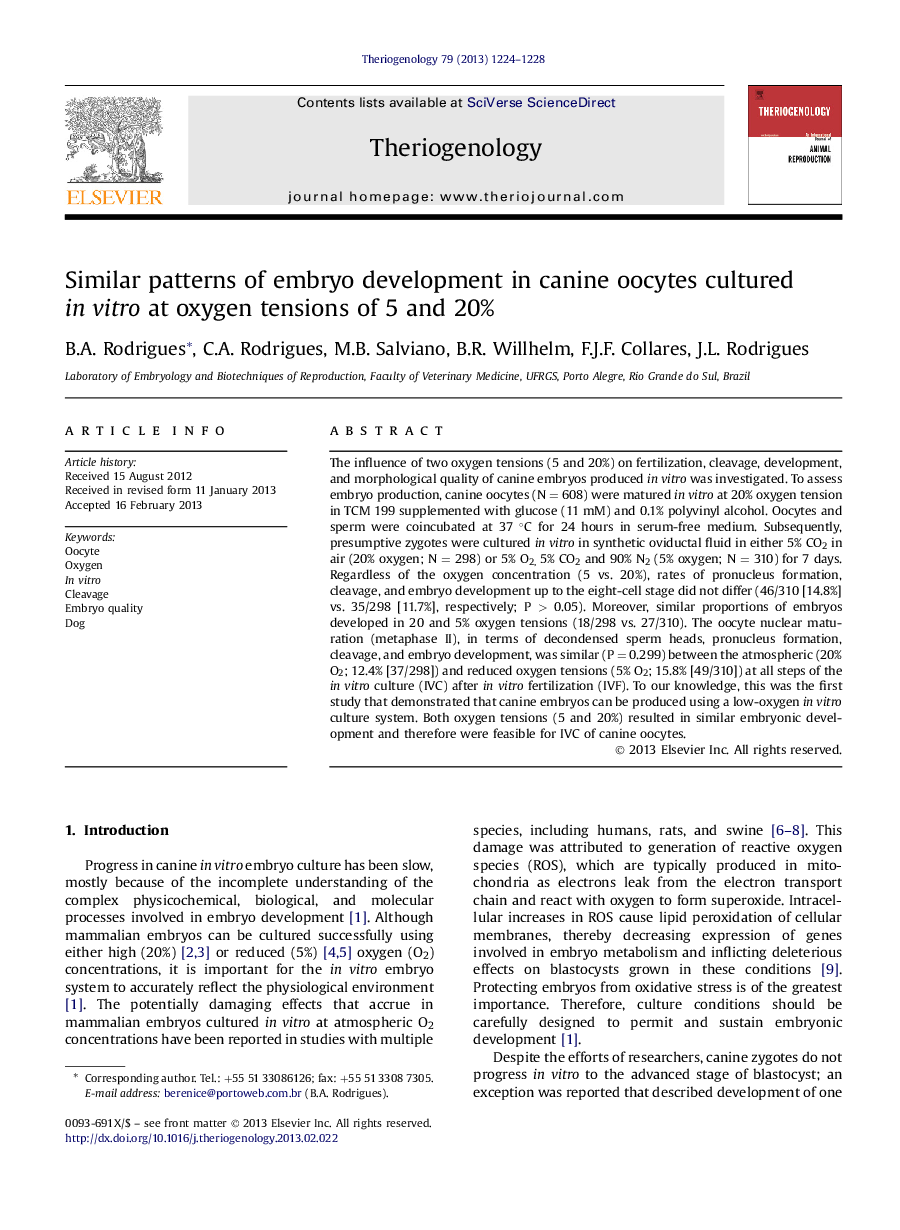| Article ID | Journal | Published Year | Pages | File Type |
|---|---|---|---|---|
| 10892408 | Theriogenology | 2013 | 5 Pages |
Abstract
The influence of two oxygen tensions (5 and 20%) on fertilization, cleavage, development, and morphological quality of canine embryos produced in vitro was investigated. To assess embryo production, canine oocytes (N = 608) were matured in vitro at 20% oxygen tension in TCM 199 supplemented with glucose (11 mM) and 0.1% polyvinyl alcohol. Oocytes and sperm were coincubated at 37 °C for 24 hours in serum-free medium. Subsequently, presumptive zygotes were cultured in vitro in synthetic oviductal fluid in either 5% CO2 in air (20% oxygen; N = 298) or 5% O2, 5% CO2 and 90% N2 (5% oxygen; N = 310) for 7 days. Regardless of the oxygen concentration (5 vs. 20%), rates of pronucleus formation, cleavage, and embryo development up to the eight-cell stage did not differ (46/310 [14.8%] vs. 35/298 [11.7%], respectively; P > 0.05). Moreover, similar proportions of embryos developed in 20 and 5% oxygen tensions (18/298 vs. 27/310). The oocyte nuclear maturation (metaphase II), in terms of decondensed sperm heads, pronucleus formation, cleavage, and embryo development, was similar (P = 0.299) between the atmospheric (20% O2; 12.4% [37/298]) and reduced oxygen tensions (5% O2; 15.8% [49/310]) at all steps of the in vitro culture (IVC) after in vitro fertilization (IVF). To our knowledge, this was the first study that demonstrated that canine embryos can be produced using a low-oxygen in vitro culture system. Both oxygen tensions (5 and 20%) resulted in similar embryonic development and therefore were feasible for IVC of canine oocytes.
Related Topics
Life Sciences
Agricultural and Biological Sciences
Animal Science and Zoology
Authors
B.A. Rodrigues, C.A. Rodrigues, M.B. Salviano, B.R. Willhelm, F.J.F. Collares, J.L. Rodrigues,
